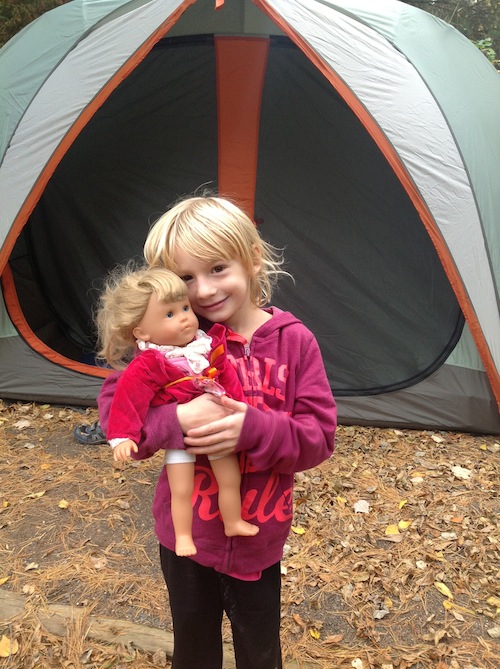Out of the blue on our recent camping trip, Tabitha had an announcement for me.
Tabitha (6 years old): I am 12 in doll years and Griffy is 16 in doll years.
Her brother Griffin is 9.
T: So how old are you in doll years, Daddy?
Me: Well, how do doll years work?
T: Well, I’m 12 and Griffy’s 16.
Me: Is it twice as old? Then I would be two times as old, so nearly 86.
My birthday is coming up next week. This has been a point of discussion around the house recently.
T: No! It’s 6 times!
Me: You’d be 36 then.
T: No. I am 12 in doll years.
Me: Oh! Six years older not 6 times as old!
T: Yeah.
Me: Then Griffy is 15, not 16. And I would be almost 49.
So What Do We Learn?
Children build lovely and complicated imaginary worlds. For a long time, Griffin and Tabitha would play “creatures” together. Whole societies of stuffed animals, dolls and plastic figurines rose and fell. These societies had celebrations and tragedies. There was Creature Christmas that could take place at any time of year. Also a Creature State Fair. Et cetera.
Combine this parallel creature/doll universe with learning about the passage of time and pretty soon doll years are going to pop up.
Griffin and I talked about tortoise years and dog years a while back. At the time, Griffin was 8. He was comparing life spans of tortoises to those of humans, as we do with dogs to generate the 7 dog years per year comparison that is commonly known.
Tabitha is firmly grounded in comparing by counting and addition, as is appropriate for a 6 year old. Somewhere between third and sixth grade, children transition from always comparing by addition and subtraction to being able to compare by multiplying and dividing. This difference is what Tabitha and I are discussing in this conversation. She says Six times but means Six more.
Starting the Conversation
Listen for the comparisons your children make. Here, Tabitha compared ages. But heights, dollar amounts, number of Tootsie Rolls in a candy dish, et cetera; all of these are possible comparisons that children will naturally make. Ask a follow-up question. How do you know? is a good place to start. What if? is a lovely follow up. For example, What if there were a newborn baby in our family; how old would it be in doll years?

